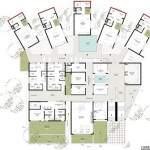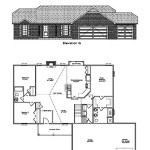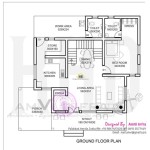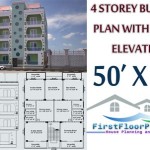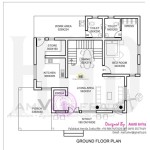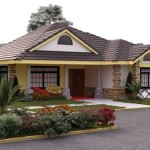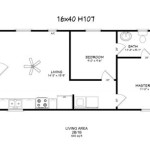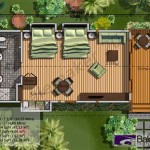Non-Traditional Small House Plans: Exploring Innovative Housing Options
The concept of the "small house" has evolved significantly beyond the traditional definition of a modest dwelling. Faced with increasing housing costs, environmental concerns, and a desire for simplified living, many individuals and families are embracing non-traditional small house plans. These plans deviate from conventional construction methods, materials, and layouts, offering a diverse range of innovative and sustainable housing solutions.
Non-traditional small house plans represent a departure from the standardized cookie-cutter approach to residential design. They prioritize unique characteristics, often incorporating elements of sustainability, adaptability, and affordability. This shift reflects a growing desire for personalized living spaces that cater to individual needs and lifestyles, rather than conforming to pre-established norms.
Rethinking Materials and Construction Techniques
One of the key aspects of non-traditional small house plans involves a reevaluation of building materials and construction techniques. Conventional housing often relies heavily on resource-intensive materials like concrete, timber, and steel. In contrast, non-traditional designs frequently explore alternative options with lower environmental impact and potentially lower costs. These alternatives can include:
Shipping Container Homes: Repurposed shipping containers offer a readily available and structurally sound building block. Their standardized dimensions allow for modular designs, which can be combined and modified to create diverse living spaces. While requiring modifications for insulation, ventilation, and aesthetic appeal, shipping container homes present a relatively quick and cost-effective construction option.
Earthbag Construction: Earthbag construction utilizes readily available soil filled into polypropylene bags, which are then stacked and tamped to create load-bearing walls. This technique is particularly suitable for self-built homes and offers excellent thermal mass, providing natural heating and cooling. Earthbag structures are durable, fire-resistant, and can be constructed with minimal specialized tools or skills.
Cob Construction: Cob is a mixture of clay, sand, straw, and water. It is a highly versatile and malleable material that can be sculpted into a wide range of shapes and forms. Cob homes are known for their organic aesthetic, excellent thermal mass, and affordability. However, cob construction is labor-intensive and requires careful attention to moisture management.
Straw Bale Construction: Straw bales, a readily available agricultural byproduct, offer excellent insulation properties when used as wall infill. Straw bale homes are energy-efficient, breathable, and can be finished with natural plasters. However, they require protection from moisture and careful attention to structural integrity.
These alternative building methods often require a different approach to design and construction, demanding a thorough understanding of the material properties and structural principles involved. However, they can offer significant advantages in terms of sustainability, affordability, and energy efficiency.
Optimizing Space and Functionality
Beyond materials and construction, non-traditional small house plans focus on optimizing space and functionality to create comfortable and efficient living environments within a smaller footprint. This involves careful consideration of layout, storage solutions, and multi-functional design elements. Key strategies include:
Open-Concept Design: Eliminating interior walls to create larger, more flexible living spaces. This allows for greater natural light penetration and a more seamless flow between different areas of the home.
Vertical Living: Utilizing vertical space to maximize functionality in a limited area. This can involve lofted bedrooms, built-in shelving that extends to the ceiling, and elevated storage solutions.
Multi-Functional Furniture: Incorporating furniture pieces that serve multiple purposes, such as sofa beds, storage ottomans, and fold-away tables. This optimizes space utilization and reduces clutter.
Smart Storage Solutions: Integrating clever storage solutions into the design, such as under-stair storage, built-in cabinets, and concealed compartments. This helps to maximize storage capacity without compromising living space.
Minimalist Design Principles: Embracing a minimalist aesthetic to reduce clutter and create a sense of spaciousness. This involves focusing on essential items and eliminating unnecessary possessions.
By employing these strategies, non-traditional small house plans can create living spaces that feel much larger than their actual square footage. Careful planning and attention to detail are crucial to maximizing the functionality and comfort of a small home.
Addressing Regulatory and Zoning Challenges
While non-traditional small house plans offer numerous advantages, they can also present challenges in terms of regulatory compliance and zoning regulations. Many conventional building codes and zoning ordinances are designed for traditionally constructed homes and may not readily accommodate alternative building methods or smaller dwelling sizes.
One common challenge is the minimum square footage requirement, which often dictates a minimum size for habitable dwellings. This can be a significant obstacle for those seeking to build tiny houses or other extremely small homes. Another challenge is the lack of specific regulations for alternative building materials and techniques, which may require obtaining variances or special permits.
To address these challenges, it is essential to:
Research Local Regulations: Thoroughly investigate local building codes, zoning ordinances, and permit requirements before embarking on a non-traditional small house project. Understanding the specific regulations in the area is crucial for ensuring compliance.
Consult with Local Building Officials: Engage in early communication with local building officials to discuss the proposed design and construction methods. This can help identify potential challenges and explore possible solutions.
Seek Professional Expertise: Consult with architects, engineers, and builders who have experience with non-traditional building methods and regulatory compliance. Their expertise can be invaluable in navigating the permitting process.
Advocate for Regulatory Reform: Support efforts to reform building codes and zoning ordinances to accommodate non-traditional housing options. This can involve participating in public hearings, contacting local government officials, and collaborating with advocacy groups.
By proactively addressing regulatory challenges and working collaboratively with local authorities, it is possible to pave the way for greater acceptance and adoption of non-traditional small house plans.
Another crucial aspect of non-traditional small house plans is their potential for sustainable living. These designs often incorporate features that minimize environmental impact, such as rainwater harvesting systems, solar panels, composting toilets, and greywater recycling systems. These elements contribute to reducing water consumption, energy usage, and waste generation, promoting a more eco-friendly lifestyle.
The flexibility and adaptability of non-traditional small house plans are also noteworthy. Many of these designs are modular, allowing for easy expansion or modification as needs change. This adaptability makes them well-suited to evolving family structures and lifestyles. Furthermore, the portability of some small house options, such as tiny houses on wheels, provides the freedom to relocate and explore different environments.
The growing popularity of non-traditional small house plans reflects a broader trend towards conscious consumption and sustainable living. As individuals and families seek more affordable, environmentally friendly, and personalized housing options, these innovative designs are poised to play an increasingly important role in the future of residential architecture.

27 Adorable Free Tiny House Floor Plans Craft Mart

27 Adorable Free Tiny House Floor Plans Craft Mart

27 Adorable Free Tiny House Floor Plans Craft Mart

Houseplans House Plans Small Floor How To Plan

Minimalist Floor Plans With Porches Houseplans Blog Com

27 Adorable Free Tiny House Floor Plans Craft Mart

1926 Universal Plan Service No 543 In Would Have Been A State Of The Art Design Close House Plans Vintage American Cottage

Small House Plans Economical Floor

10 Small House Plans With Big Ideas Bob Vila

Small House Plans Economical Floor

